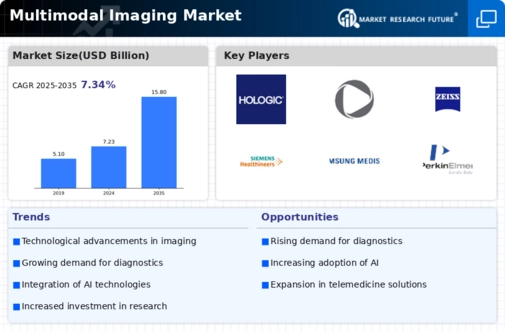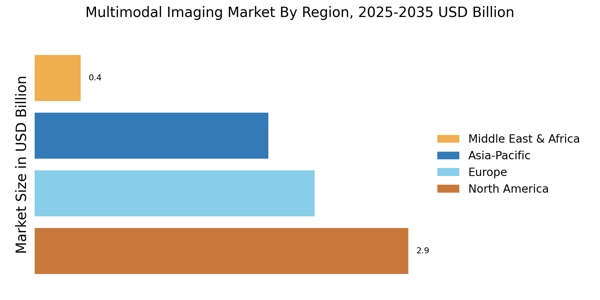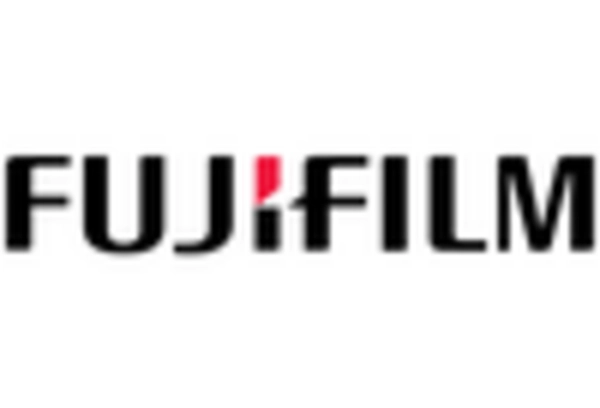Advancements in Imaging Technologies
The Multimodal Imaging Market is witnessing rapid advancements in imaging technologies, which are enhancing diagnostic capabilities. Innovations such as hybrid imaging systems, which combine modalities like PET and CT, are becoming increasingly prevalent. These systems provide comprehensive data that can lead to more accurate diagnoses and treatment plans. The market for hybrid imaging is projected to grow significantly, with estimates suggesting a value of USD 5 billion by 2027. This growth is fueled by the need for precise imaging in oncology and cardiology, where multimodal approaches can offer critical insights. As technology continues to evolve, the Multimodal Imaging Market is likely to benefit from improved imaging quality and expanded applications across various medical fields.
Integration of Artificial Intelligence
The integration of artificial intelligence (AI) into the Multimodal Imaging Market is transforming diagnostic capabilities. AI algorithms enhance image analysis, enabling faster and more accurate interpretations of multimodal data. This technology can potentially reduce the time required for diagnosis, which is crucial in critical care settings. According to recent estimates, the AI imaging market is projected to reach USD 2.5 billion by 2026, indicating a robust growth trajectory. The incorporation of AI not only improves efficiency but also aids in identifying patterns that may be overlooked by human analysts. As healthcare systems increasingly adopt AI-driven solutions, the Multimodal Imaging Market is likely to experience significant advancements in diagnostic precision and patient outcomes.
Rising Demand for Non-Invasive Procedures
There is a growing demand for non-invasive diagnostic procedures within the Multimodal Imaging Market. Patients and healthcare providers alike prefer techniques that minimize discomfort and risk. Non-invasive imaging modalities, such as MRI and ultrasound, are gaining traction due to their ability to provide detailed insights without the need for surgical intervention. Market data suggests that the non-invasive imaging segment is expected to grow at a compound annual growth rate (CAGR) of 8% over the next five years. This trend reflects a broader shift towards patient-centered care, where the emphasis is placed on safety and comfort. As the demand for non-invasive options continues to rise, the Multimodal Imaging Market is poised for expansion, driven by innovations in imaging technologies.
Increased Focus on Early Disease Detection
The emphasis on early disease detection is a driving force in the Multimodal Imaging Market. Early diagnosis is crucial for effective treatment, particularly in conditions such as cancer and cardiovascular diseases. Multimodal imaging techniques enable clinicians to detect abnormalities at earlier stages, improving patient prognoses. Recent studies indicate that early detection can increase survival rates significantly, which is prompting healthcare systems to invest in advanced imaging technologies. The market for early detection imaging is expected to grow, with a projected CAGR of 7% over the next few years. This focus on early intervention is likely to propel the Multimodal Imaging Market forward, as healthcare providers seek to enhance diagnostic accuracy and patient outcomes.
Growing Investment in Healthcare Infrastructure
Investment in healthcare infrastructure is a critical driver for the Multimodal Imaging Market. Governments and private entities are increasingly allocating funds to enhance healthcare facilities, which includes upgrading imaging technologies. This trend is particularly evident in emerging economies, where there is a concerted effort to improve healthcare access and quality. Recent reports indicate that healthcare spending is expected to rise by 5% annually, with a significant portion directed towards imaging equipment and technologies. As healthcare systems expand and modernize, the demand for advanced multimodal imaging solutions is likely to increase. This investment not only supports the growth of the Multimodal Imaging Market but also contributes to improved healthcare delivery and patient care.


















Leave a Comment